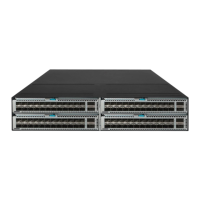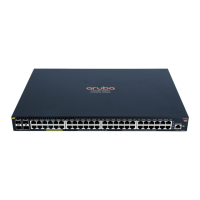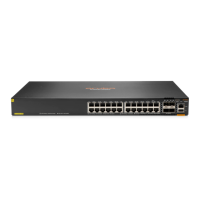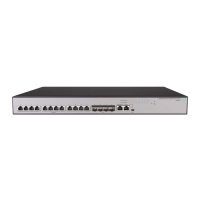373
301BConfiguring routing between an MCE and a VPN site
You can configure static routing, RIP, OSPF, IS-IS, EBGP or IBGP between an MCE and a VPN site.
559BConfiguring static routing between an MCE and a VPN site
An MCE can reach a VPN site through a static route. Static routing on a traditional CE is globally
effective and does not support address overlapping among VPNs. An MCE supports binding a static
route to a VPN instance, so that the static routes of different VPN instances can be isolated from
each other.
To configure a static route to a VPN site:
Step Command Remarks
1. Enter system view.
system-view
N/A
2. Configure a static
route for a VPN
instance.
ip route-static
vpn-instance
s-vpn-instance-name
dest-address { mask-length | mask } { interface-type
interface-number [ next-hop-address ] |
next-hop-address [
public
] [
track
track-entry-number ] |
vpn-instance
d-vpn-instance-name next-hop-address [
track
track-entry-number ] } [
permanent
] [
preference
preference ] [
tag
tag-value ] [
description
text ]
By default, no static
routes are configured.
Perform this
configuration on the
MCE. On the VPN
site, configure a
common static route.
3. (Optional.) Configure
the default preference
for static routes.
ip route-static default-preference
default-preference
The default
preference is 60.
560BConfiguring RIP between an MCE and a VPN site
A RIP process belongs to the public network or a single VPN instance. If you create a RIP process
without binding it to a VPN instance, the process belongs to the public network. Binding RIP
processes to VPN instances can isolate routes of different VPNs. For more information about RIP,
see Layer 3—IP Routing Configuration Guide.
To configure RIP between an MCE and a VPN site:
Step Command Remarks
1. Enter system view.
system-view
N/A
2. Create a RIP process for a
VPN instance and enter RIP
view.
rip
[ process-id ]
vpn-instance
vpn-instance-name
Perform this configuration on the
MCE. On a VPN site, create a
common RIP process.
3. Enable RIP on the interface
attached to the specified
network.
network
network-address
By default, RIP is disabled on an
interface.
4. Redistribute remote site
routes advertised by the PE
into RIP.
import-route
protocol
[
process-id |
all-processes
|
allow-ibgp
] [
allow-direct
|
cost
cost-value |
route-policy
route-policy-name |
tag
tag ] *
By default, no route is
redistributed into RIP.
561BConfiguring OSPF between an MCE and a VPN site
An OSPF process belongs to the public network or a single VPN instance. If you create an OSPF
process without binding it to a VPN instance, the process belongs to the public network.
Binding OSPF processes to VPN instances can isolate routes of different VPNs. For more
information about OSPF, see Layer 3—IP Routing Configuration Guide.
To configure OSPF between an MCE and a VPN site:

